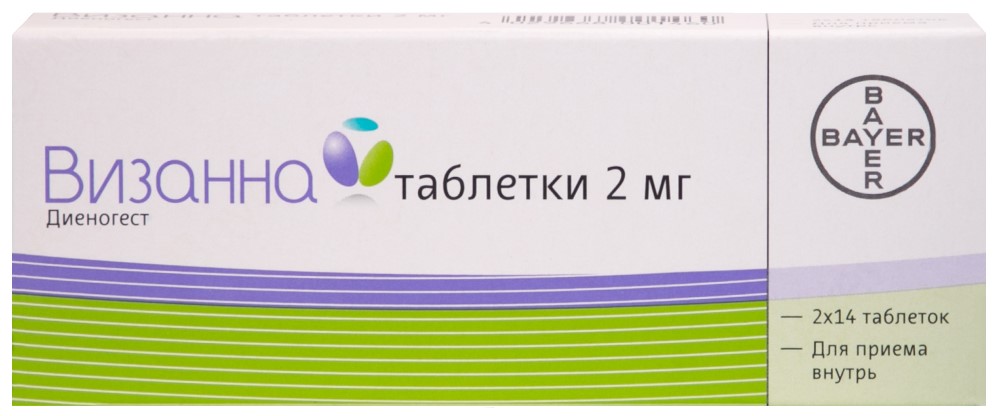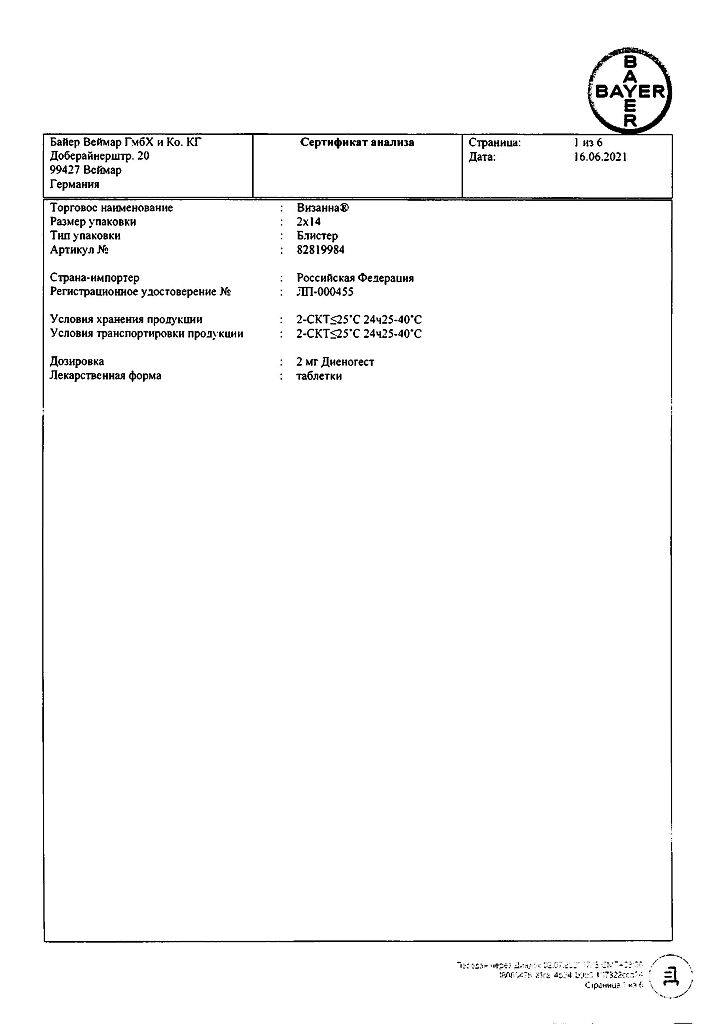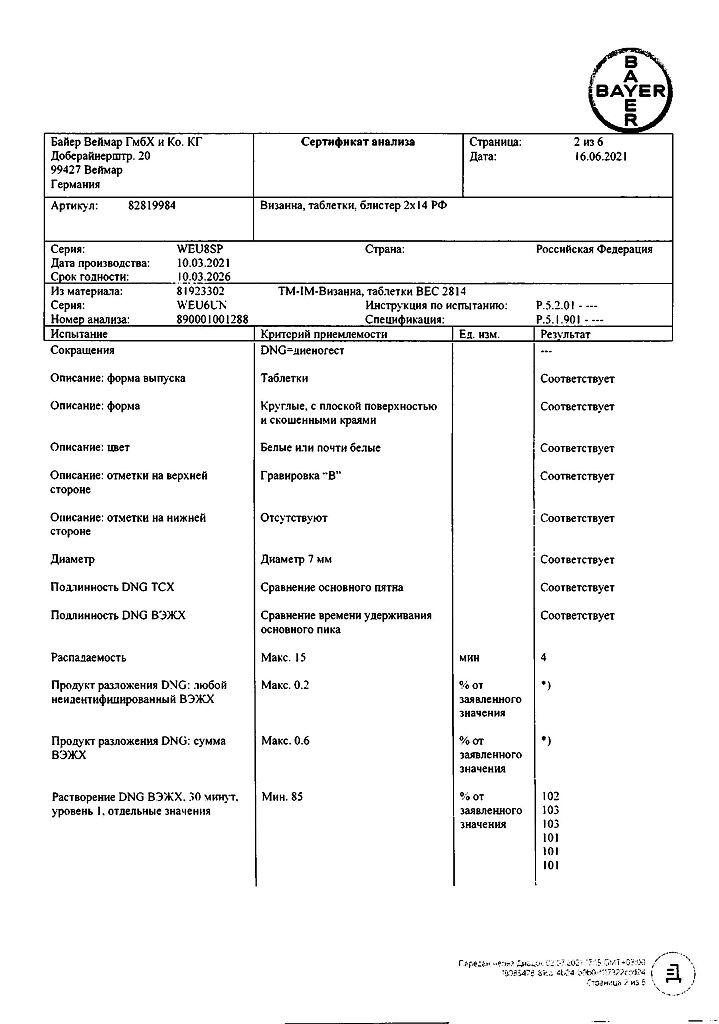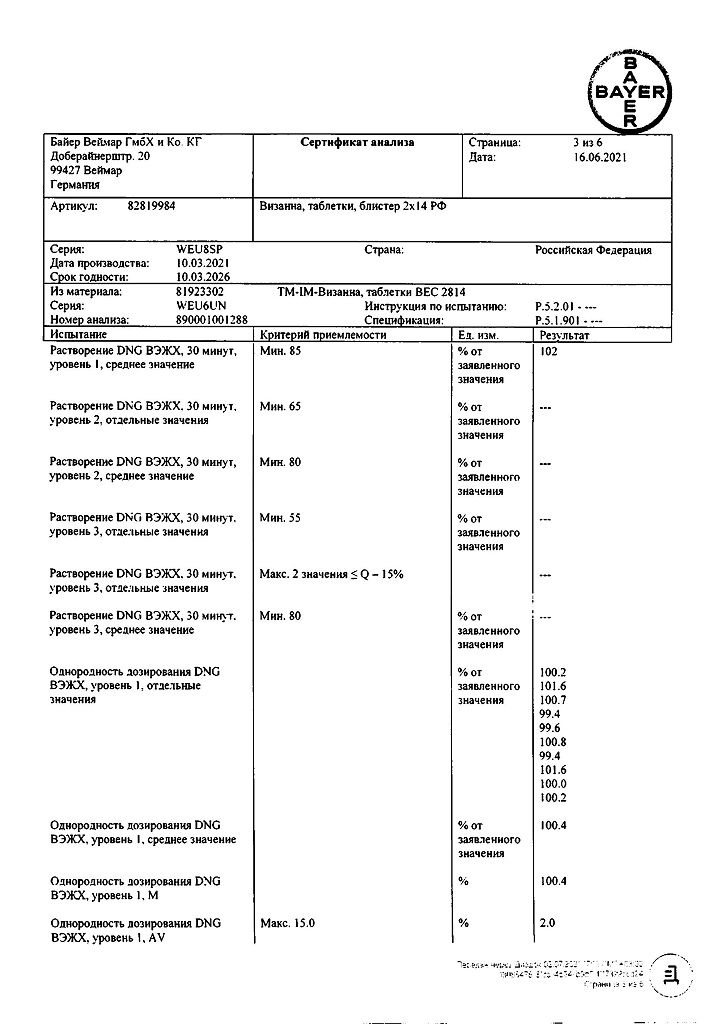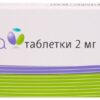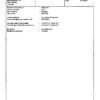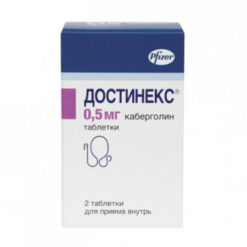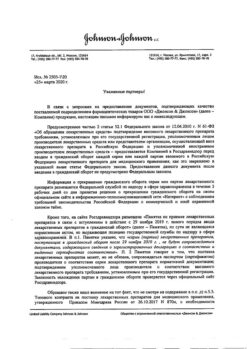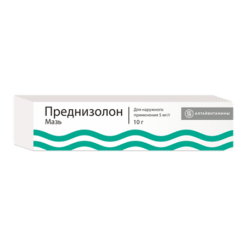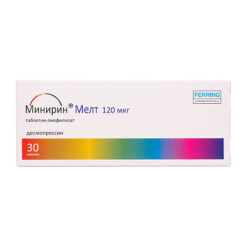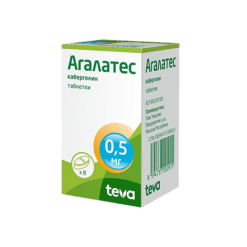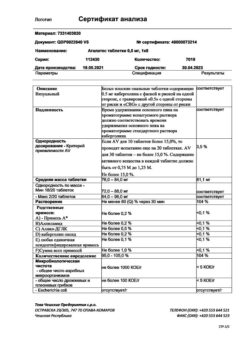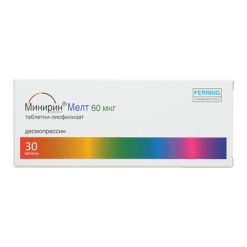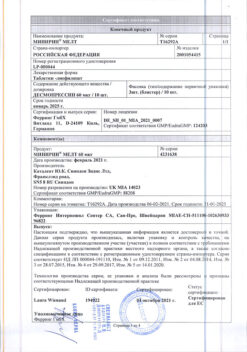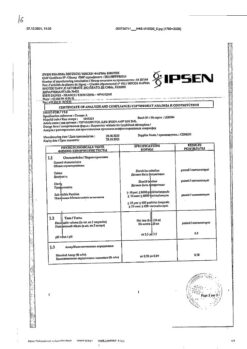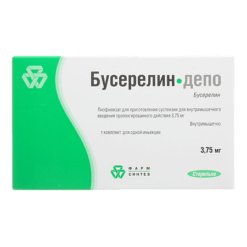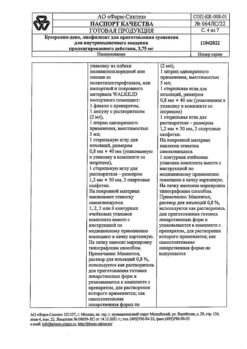No products in the cart.
Visanna, tablets 2 mg 28 pcs
€97.28 €84.31
Description
Pharmacodynamics
Dienogest is a derivative of nortestosterone, characterized by antiandrogenic activity of approximately one-third that of cyproterone acetate. Dienogestrone binds to progesterone receptors in the human uterus, having only 10% relative progesterone affinity. Despite its low affinity for progesterone receptors, dienogestrone is characterized by a potent progestagenic effect in vivo. Dienogest has no significant mineralocorticoid or glucocorticoid activity in vivo.
Dienogest affects endometriosis by suppressing the trophic effects of estrogen against eutopic and ectopic endometrium, due to a decrease in estrogen production in the ovaries and a decrease in their plasma concentration.
Long-term use causes initial decidualization of endometrial tissue with subsequent atrophy of endometrioid foci. Additional properties of dienogest, such as immunological and anti-angiogenic effects, appear to contribute to its suppressive effect on cell proliferation.
There was no decrease in bone mineral density and no significant effect of Vizantin on standard laboratory parameters, including general and biochemical blood counts, liver enzymes, lipids, and HbA1C. Dienogest moderately reduces estrogen production in the ovaries.
Pharmacokinetics
Absorption. After oral administration, dienogest is rapidly and almost completely absorbed. The serum Cmax of 47 ng/mL is reached approximately 1.5 h after a single oral dose. Bioavailability is about 91%. Pharmacokinetics of dienogest in the dose range from 1 to 8 mg is dose-dependent.
Distribution. Dienogest binds to serum albumin and does not bind to sex hormone-binding globulin (hSPH) and corticosteroid-binding globulin. 10% of the total serum concentration of the substance is in the form of a free steroid, whereas about 90% is nonspecifically bound to albumin. The apparent Vd of dienogest is 40 liters.
Metabolism. Dienogest is almost completely metabolized mainly by hydroxylation to form several virtually inactive metabolites. Based on in vitro and in vivo studies, the main enzyme involved in the metabolism of dienogest is CYP3A4. Metabolites are excreted very rapidly, so that the predominant fraction in blood plasma is unchanged dienogest. The metabolic clearance rate from serum is 64 ml/min.
Elimination. The serum concentration of dienogest decreases in two phases. T1/2 in the terminal phase is approximately 9-10 hours. After oral administration at a dose of 0.1 mg/kg, dienogest is excreted as metabolites, which are excreted through the kidneys and intestines at a ratio of approximately 3:1. The T1/2 of the metabolites when excreted by the kidneys is 14 hours. After oral administration, approximately 86% of the dose received is excreted within 6 days, with the majority excreted in the first 24 hours, primarily by the kidneys.
The equilibrium concentration. The pharmacokinetics of dienogest is independent of hGH levels. The serum concentration of dienogest after daily administration increases approximately 1.24-fold, reaching Css after 4 days of administration. The pharmacokinetics of dienogest after multiple doses of Visanna can be predicted based on the pharmacokinetics after a single dose.
Indications
Indications
Treatment of endometriosis.
Pharmacological effect
Pharmacological effect
Pharmacodynamics
Dienogest is a derivative of nortestosterone, characterized by antiandrogenic activity that is approximately one third of that of cyproterone acetate. Dienogest binds to progesterone receptors in the human uterus, having only 10% of the relative affinity of progesterone. Despite its low affinity for progesterone receptors, dienogest is characterized by a powerful progestogenic effect in vivo. Dienogest does not have significant mineralocorticoid or glucocorticoid activity in vivo.
Dienogest acts on endometriosis by suppressing the trophic effects of estrogens in relation to the eutopic and ectopic endometrium, due to a decrease in the production of estrogens in the ovaries and a decrease in their concentration in plasma.
With prolonged use, it causes initial decidualization of endometrial tissue followed by atrophy of endometriotic lesions. Additional properties of dienogest, such as immunological and antiangiogenic effects, appear to contribute to its inhibitory effects on cell proliferation.
There was no decrease in bone mineral density, nor a significant effect of Visanne on standard laboratory parameters, including general and biochemical blood parameters, liver enzymes, lipids and HbA1C. Dienogest moderately reduces the production of estrogen in the ovaries.
Pharmacokinetics
Absorption. After oral administration, dienogest is rapidly and almost completely absorbed. Serum Cmax of 47 ng/ml is achieved approximately 1.5 hours after a single oral dose. Bioavailability is about 91%. The pharmacokinetics of dienogest in the dose range from 1 to 8 mg is characterized by dose dependence.
Distribution. Dienogest binds to serum albumin and does not bind to sex hormone binding globulin (SHBG) or corticosteroid binding globulin. 10% of the total concentration of the substance in the blood serum is in the form of free steroid, while about 90% is nonspecifically bound to albumin. The apparent Vd of dienogest is 40 l.
Metabolism. Dienogest is almost completely metabolized, predominantly by hydroxylation to form several practically inactive metabolites. Based on the results of in vitro and in vivo studies, the main enzyme involved in the metabolism of dienogest is CYP3A4. Metabolites are eliminated very quickly, so that the predominant fraction in the blood plasma is unchanged dienogest. The rate of metabolic clearance from serum is 64 ml/min.
Elimination. The concentration of dienogest in the blood serum decreases in two phases. T1/2 in the terminal phase is approximately 9–10 hours. After oral administration at a dose of 0.1 mg/kg, dienogest is excreted in the form of metabolites, which are excreted through the kidneys and intestines in a ratio of approximately 3:1. T1/2 of metabolites when excreted by the kidneys is 14 hours. After oral administration, approximately 86% of the dose received is eliminated within 6 days, with the majority eliminated in the first 24 hours, primarily by the kidneys.
Equilibrium concentration. The pharmacokinetics of dienogest are independent of SHBG levels. The serum concentration of dienogest after daily dosing increases approximately 1.24-fold, reaching Css after 4 days of dosing. The pharmacokinetics of dienogest after repeated doses of Visanne can be predicted on the basis of the pharmacokinetics after a single dose.
Special instructions
Special instructions
Before you start taking Visanne, you must rule out pregnancy. While taking Visanne, if contraception is necessary, patients are advised to use non-hormonal contraceptive methods (for example, the barrier method).
During pregnancy that occurs in women using contraceptives with only a progestogen component (for example, minipills), there is a greater likelihood of its ectopic localization compared to pregnancy that occurs while taking combined oral contraceptives. Therefore, the use of Visanne in women with a history of ectopic pregnancy or tubal dysfunction should be decided only after a careful assessment of the balance of benefits and risks.
Because Visanne is a progestin-only product, it can be assumed that the special warnings and precautions for the use of other progestin-only products also apply to the use of Visanne, although not all warnings and precautions are based on relevant results from clinical trials with Visanne.
If any of the following conditions or risk factors are present or worsened, an individual risk/benefit assessment should be performed before starting or continuing Visanne.
Active ingredient
Active ingredient
Dienogest
Composition
Composition
Active ingredient:
dienogest 2 mg.
Excipients:
lactose monohydrate,
potato starch,
microcrystalline cellulose,
povidone K25,
talc,
crospovidone,
magnesium stearate.
Contraindications
Contraindications
Individual intolerance to Visanne components,
acute thrombophlebitis,
atherosclerosis,
myocardial infarction,
stroke,
diabetes mellitus with vascular complications,
severe liver diseases.
Side Effects
Side Effects
Allergic reactions are possible,
bleeding from the vagina,
headache,
discomfort in the mammary glands,
decreased mood,
acne.
Interaction
Interaction
Selected enzyme inducers or inhibitors (CYP3A isoenzyme):
Progestogens, including dienogest, are metabolized primarily with the participation of the cytochrome P450 3A4 (CYP3A4) system, localized both in the intestinal mucosa and in the liver. Therefore, inducers or inhibitors of CYP3A4 may affect the metabolism of progestin drugs. Increased clearance of sex hormones due to enzyme induction can lead to a decrease in the therapeutic effect of Visanne and also cause side effects, for example, a change in the nature of uterine bleeding.
Reduced clearance of sex hormones due to enzyme inhibition may increase the exposure of dienogest, which may lead to side effects.
Substances capable of inducing enzymes:
The use of drugs that induce microsomal liver enzymes (for example, enzymes of the cytochrome P450 system) can lead to an increase in the clearance of sex hormones. These drugs include: phenytoin, barbiturates, primidone, carbamazepine and rifampicin; There are also suggestions for oxcarbazepine, topiramate, felbamate, ritonavir and griseofulvin, nevirapine and preparations containing St. John’s wort. Maximum enzyme induction is usually observed no earlier than 2-3 weeks, but can then persist for at least 4 weeks after cessation of therapy.
Substances that can inhibit enzymes:
Known CYP3A4 inhibitors such as azole antifungals (eg, ketoconazole, itraconazole, fluconazole), cimetidine, verapamil, macrolides (eg, erythromycin, clarithromycin, and roxithromycin), diltiazem, protease inhibitors (eg, ritonavir, saquinavir, indinavir, nelfinavir), antidepressants (for example, nefazodone, fluvoxamine, fluoxetine) and grapefruit juice may increase the concentration of gestagens in the blood plasma and lead to the development of side effects.
Effect of dienogest on other medicinal substances:
Based on in vitro inhibition studies, it is unlikely that Visanne will develop a clinically significant interaction with the metabolism of other drugs involving enzymes of the cytochrome P450 system.
Interaction with food:
A standardized high-fat meal had no effect on the bioavailability of Visanne.
Other types of interaction:
Taking gestagens may affect the results of some laboratory tests, including biochemical parameters of liver, thyroid, adrenal and kidney function, plasma concentrations of proteins, for example, lipid/lipoprotein fractions, parameters of carbohydrate metabolism and coagulation parameters. Changes usually do not go beyond normal values.
Overdose
Overdose
No serious adverse events have been reported following overdose.
Symptoms that may occur in case of overdose: nausea, vomiting, spotting or metrorrhagia.
There is no specific antidote; symptomatic treatment should be carried out.
Storage conditions
Storage conditions
Store at a temperature not exceeding 30°C.
Shelf life
Shelf life
2 years.
Manufacturer
Manufacturer
Bayer Weimar GmbH & Co. KG, Germany
Additional information
| Shelf life | 2 years. |
|---|---|
| Conditions of storage | Store at temperatures not exceeding 30 ° C. |
| Manufacturer | Bayer Weimar GmbH & Co. KG, Germany |
| Medication form | pills |
| Brand | Bayer Weimar GmbH & Co. KG |
Related products
Buy Visanna, tablets 2 mg 28 pcs with delivery to USA, UK, Europe and over 120 other countries.

